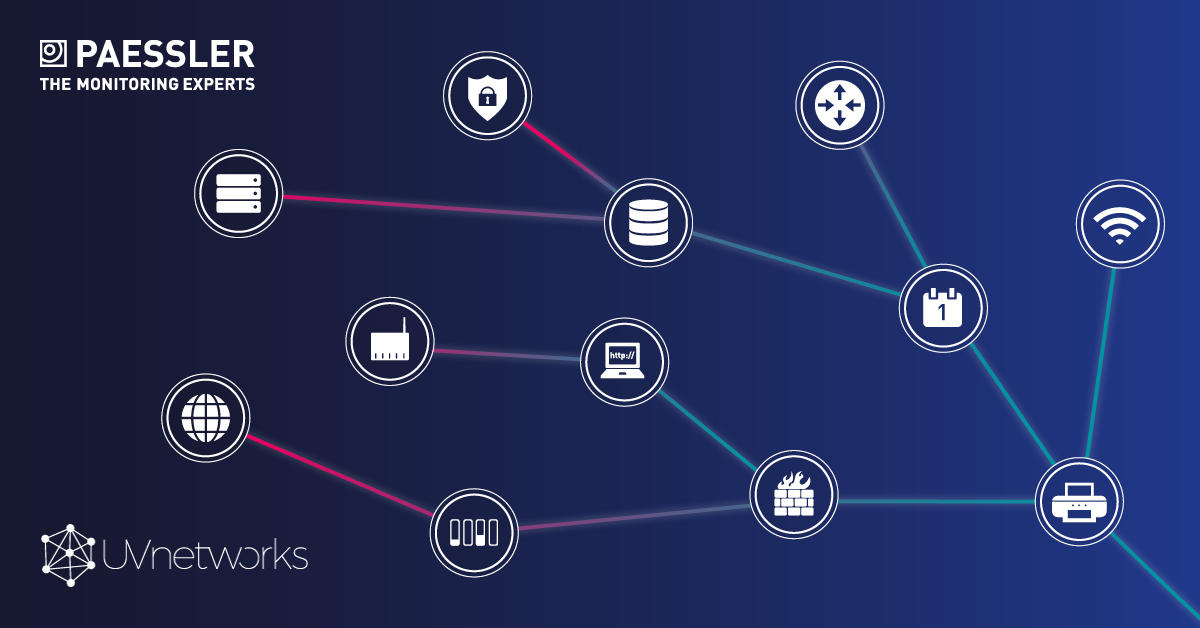As former British politician Amber Rudd once said: “Automation is driving the decline of banal and repetitive tasks.”
The UK Home Secretary was referring to national security projects, tasks and solutions that were being replaced by automated processes, machinery, and software. But she was also referencing the need to review time consuming, trivial, and monotonous tasks and search for efficient alternatives.
This concept can be applied to every industry today. Automated driving will revolutionize the auto industry, surgeries will soon be performed by robots and plants will be grown and harvested without human intervention.
The replacement of mundane and repetitive tasks is the goal of any efficient organization and society. One such task is the creation and maintenance of network maps that need updating whenever a change is made to the network. It’s a task usually assigned to an IT Technician. At the risk of upsetting my industry colleagues – but someone has to say it – manual map creation is dull and repetitive and is a task that should have been automated years ago.
Automatic network maps with UVexplorer
Network administrators have been tasked with manually producing network maps since networks were first created. Map designer tools were built in response to this need, but the responsibility was still on the creator to accurately portray their network.
Fast forward to today: government regulations have required network maps to be periodically created for security purposes. NIST 800-171 and the US Cybersecurity Maturity Model Certification (CMMC) assessment both require a documented System Security Plan (SSP), which cannot be accomplished without a network map. The technicians that build these maps expend every effort to ensure their veracity, but when network maps are manually created, it is time-consuming, labor-intensive, and prone to error, and then the results quickly become out of date.
UVexplorer provides a complete automated network mapping solution that discovers all Layer 2 devices on your network. This is no simple task. Network mapping is a cat and mouse game with hardware that network administrators and others have sourced from known and unknown manufacturers. By implementing industry standard protocols and proprietary methods, UVexplorer automatically discovers all networked devices and displays the topology in a detailed Layer 2 visual map. 
Displaying such a map is only one aspect of UVexplorer. It also captures your complete device inventory and device configurations. And to make your job easier as a network administrator, UVexplorer includes an IP/MAC Finder, Service Port Scanner, Real-Time CPU/Interface Status display and Layer 2 Tracing.
You can even view the interfaces connected to a device:

These tools and features are bundled together to provide one solution to perform many of your network management tasks. And we haven’t even discussed the benefit of viewing dynamic sensors in Paessler PRTG monitoring software yet. I’ll get to that shortly.
Traditionally installed as a Windows-based discovery tool or implemented as a PRTG “agent”, UVexplorer is also available through a web-based management console. The console is installed on-premises and provides storage and access to an unlimited number of network maps. The console requires a low-resource agent to be installed on each network and enables all the features available in UVexplorer. Users can log into the UVexplorer console and view all their networks in one central display.
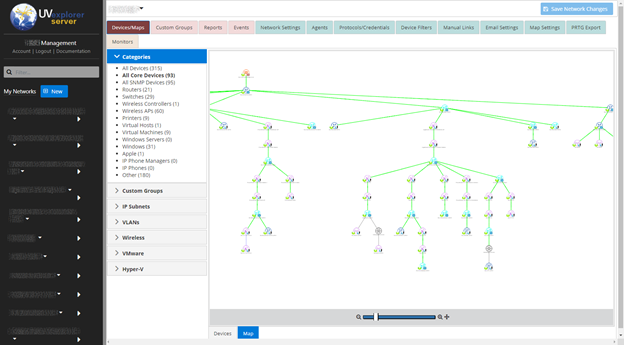
The console incorporates role-based access control (RBAC) for clients, technicians and administrators, to view, download and access the network device data and maps. These roles can also be defined and implemented through integration with Active Directory services.
Viewing the resulting network maps in UVexplorer is convenient, but if you need to share the topology diagrams with other platforms, UVexplorer supports exporting to PDF and SVG formats and maps can be sent directly into Lucidchart, Visio and PRTG.
Automated maps from UVexplorer into PRTG
To make the PRTG experience even better, UVexplorer exports the Layer 2 maps and device data directly into your PRTG console. The maps and reports can be found in the ‘Devices’ area of the PRTG console under the ‘UVX Map’ and ‘UVX Reports’ tabs.
Here is an example of a network that was discovered by UVexplorer and imported into PRTG. One thing you will notice is that every device is color coded to reflect the status of the assigned PRTG sensors displayed on the Layer 2 map.
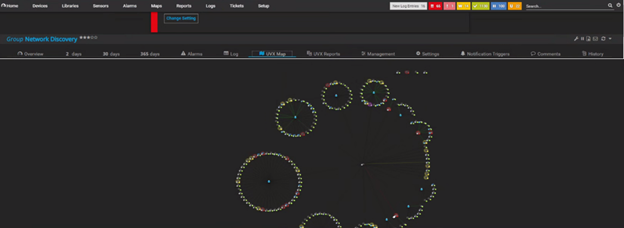
The dynamic reflection of the PRTG sensor status allows network administrators to visually recognize network problems rapidly. UVexplorer then allows them to drill into the device to see what the sensor issue is, all within the PRTG console.
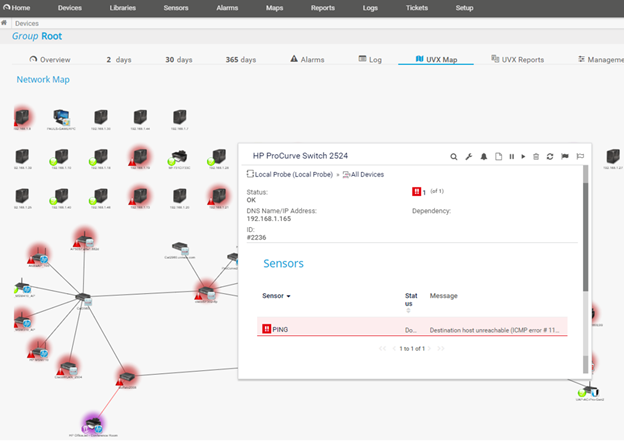
This feature provides an easy view of network issues and can make your job easier in troubleshooting and repairing network issues.
Automated backup for switch configurations from UVexplorer to PRTG
If that was all UVexplorer provided it would merit serious consideration for adoption by any PRTG user, but there is more. UVexplorer captures and archives your switch configuration scripts.
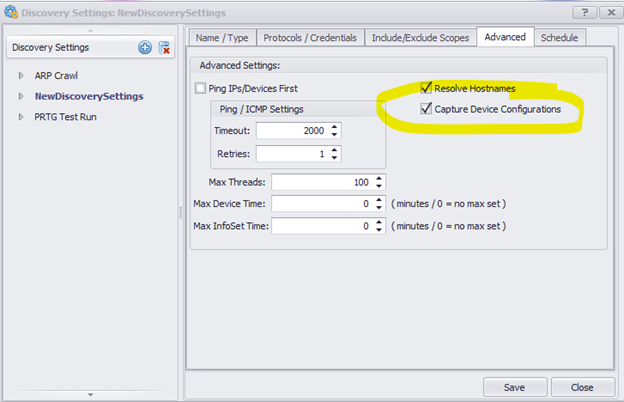
This means you no longer need multiple tools for Layer 2 Mapping and configuration management. UVexplorer provides both in its simple interface. The configurations are captured during every scheduled discovery. The discoveries can be scheduled on an hourly, daily, weekly or ad-hoc basis. When a configuration has been changed, UVexplorer will send an email notification to you – how nice is that!
Not only that but UVexplorer will also help you find what has changed between the two configuration scripts. Simply open the changed script and use the “Diff Tool” to compare it to the previous script. In this example the change is highlighted in yellow:
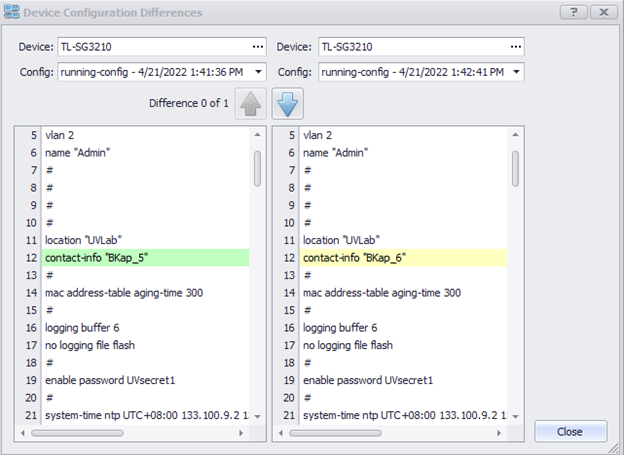
The network administrator can then roll back the configuration to a previous state, if required. Thanks to UVexplorer’s tight integration with PRTG, config management tasks can be performed directly from the PRTG console.
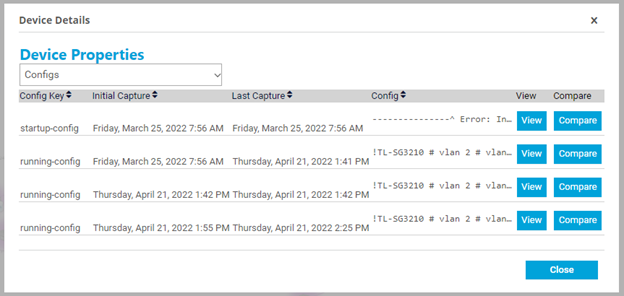
This also includes access to the config “diff viewer” as well.

As previously mentioned, needing just a single platform to meet your Layer 2 mapping needs and manage device configurations removes the need to jump between different applications thereby saving time and reducing complexity.
Automated asset inventory from UVexplorer to PRTG
“But that’s not all!” - I feel like Bob Barker on the Price is Right (an American TV game show). When discovering the network devices UVexplorer captures all the assets and information about them to create an inventory report.
The data captured includes device name, IP address, description, location, serial number, model, and HW/SW/FW versions.
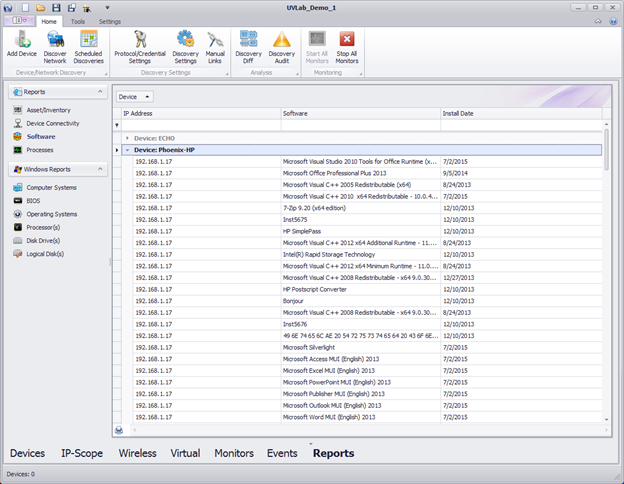
These reports can be exported for implementation into purchasing and other systems in the PDF, HTML, DOCX, XLS(X), CSV and other formats.
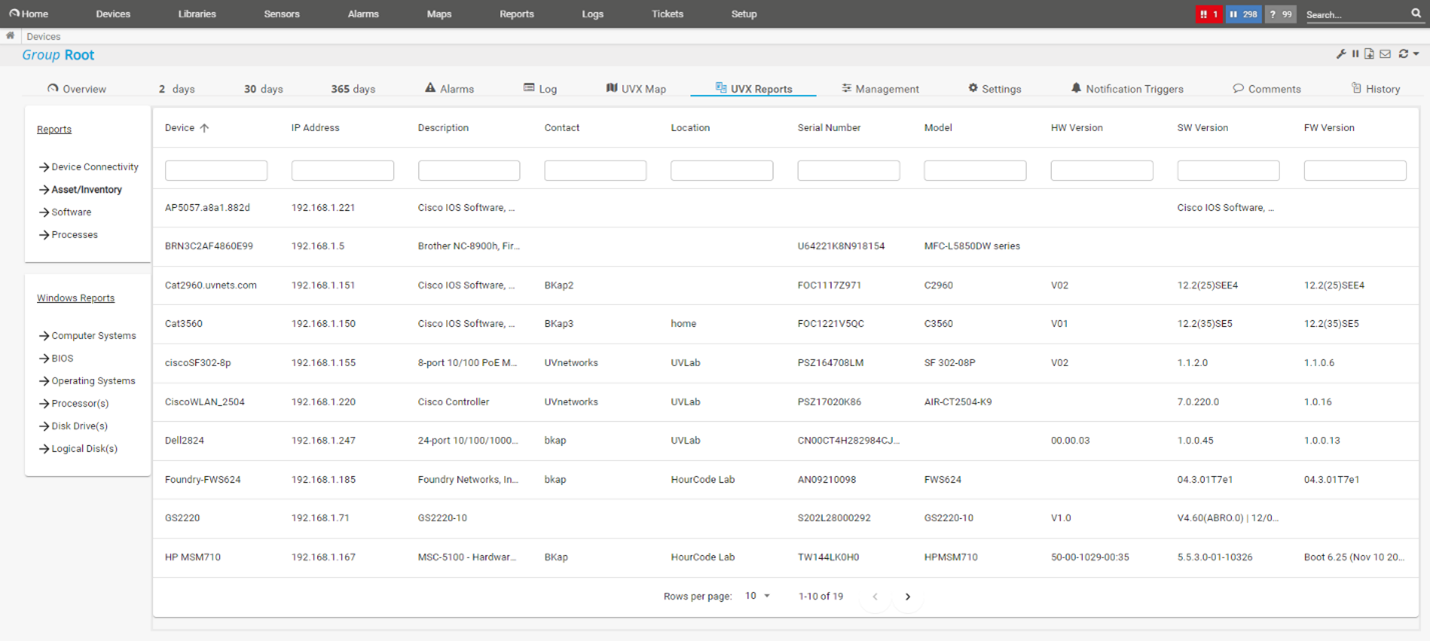
And, once again, this report is available directly in PRTG, so you have one location for all your data.
Layer 2 mapping, configuration backup and asset inventory are just simple examples of the information that UVexplorer discovers and provides to your PRTG console. UVexplorer is frequently adding new devices, features, and functionality with every new release.
The advantages of full automation for your organization
Manual tasks can only be removed when the replacement is a trusted, fully automated solution. Adding a semi-automated solution that still requires manual adjustment and changes provides some cost-savings but can cause headaches, knowledge gaps and potential performance failures.
When a fully automated solution removes all manual tasks, without creating headaches, an organization will see value, profit, and considerable labor savings. UVexplorer, with its detailed Layer 2 maps, expertise in network discovery, and direct integration with PRTG is an ideal solution for automated network map generation and can help reduce the burden of banal and repetitive tasks.
 Published by
Published by 